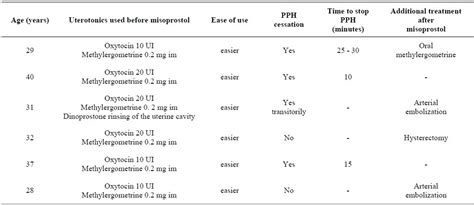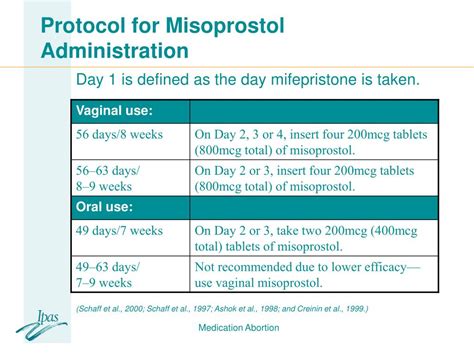Intro
Discover the uses of Misoprost 200 Mg, a medication for gastric ulcers, abortion, and labor induction, with benefits including preventing NSAID-induced ulcers and managing postpartum hemorrhage.
The importance of understanding medication uses and side effects cannot be overstated, especially for drugs like Misoprostol, which is widely used for various medical purposes. Misoprostol, often prescribed in doses such as 200 mg, plays a crucial role in treating and preventing certain conditions in the gastrointestinal system and beyond. Its application spans multiple medical specialties, making it a versatile and significant pharmaceutical agent. The drug's mechanism of action, benefits, and potential side effects are critical areas of interest for both healthcare providers and patients.
Misoprostol's primary use is as a protective agent for the stomach lining, preventing ulcers that can be caused by nonsteroidal anti-inflammatory drugs (NSAIDs). This is particularly important for patients who require long-term NSAID therapy, as these medications can cause significant gastrointestinal side effects, including ulcers and bleeding. By mitigating these risks, Misoprostol helps ensure that patients can safely receive the pain relief or anti-inflammatory treatment they need without suffering severe gastrointestinal complications.
The drug works by reducing acid production in the stomach, creating a more protective environment for the stomach lining. This action not only prevents ulcers but can also help in the healing process of existing ulcers, making it a valuable treatment option for patients suffering from peptic ulcer disease. Its efficacy in this area has made it a staple in gastrointestinal medicine, often prescribed alongside NSAIDs to counteract their harmful effects on the stomach.
Misoprostol Mechanism of Action

The mechanism of action of Misoprostol is rooted in its ability to mimic the effects of prostaglandins, which are natural substances in the body that help protect the stomach lining. By acting as a prostaglandin analogue, Misoprostol increases the production of mucus and bicarbonate in the stomach, creating a barrier against acid and reducing the risk of ulcers. This prostaglandin-like effect also contributes to the drug's ability to stimulate uterine contractions, which is another significant aspect of its use.
Uses of Misoprostol in Obstetrics

In the field of obstetrics, Misoprostol is utilized for several purposes, including inducing labor and managing postpartum hemorrhage. Its ability to stimulate uterine contractions makes it an effective agent for cervical ripening and labor induction. This is particularly useful in situations where vaginal delivery is preferred but labor needs to be initiated or augmented. Additionally, Misoprostol can be used to treat and prevent postpartum hemorrhage by promoting uterine contraction, which helps reduce bleeding after childbirth.
Benefits and Risks in Obstetric Use
The use of Misoprostol in obstetrics offers several benefits, including the ability to induce labor in a controlled manner and reduce the risk of postpartum complications. However, like any medication, it also carries potential risks and side effects, such as uterine hyperstimulation, which can lead to fetal distress. Therefore, its use in obstetrics must be carefully monitored and managed by healthcare professionals.Administration and Dosage

The administration and dosage of Misoprostol can vary depending on its intended use. For the prevention of NSAID-induced ulcers, a common dosage is 200 mcg (micrograms) two to four times a day. In obstetric applications, the dosage and administration route (oral, vaginal, or buccal) may differ, with careful consideration given to the specific clinical scenario and the patient's health status.
Considerations for Use
When considering the use of Misoprostol, whether for gastrointestinal protection or obstetric purposes, several factors must be taken into account. These include the patient's medical history, current health status, and any potential contraindications. For example, Misoprostol is contraindicated in pregnancy for the prevention of ulcers due to its potential to stimulate uterine contractions, which could endanger the pregnancy.Potential Side Effects

Like all medications, Misoprostol can cause side effects, some of which are more common than others. Gastrointestinal symptoms such as diarrhea and abdominal pain are among the most frequently reported side effects. In obstetric use, side effects can include fever, chills, and nausea. It's essential for patients to be aware of these potential side effects and to discuss any concerns with their healthcare provider.
Managing Side Effects
Managing side effects of Misoprostol involves monitoring for their occurrence and taking steps to minimize their impact. For gastrointestinal side effects, this might include dietary adjustments or the use of additional medications to alleviate symptoms. In obstetric applications, close monitoring of both the mother and the fetus is crucial to quickly identify and address any adverse effects.Conclusion and Future Perspectives

In conclusion, Misoprostol is a versatile medication with significant applications in both gastrointestinal medicine and obstetrics. Its ability to protect the stomach lining and induce labor makes it a valuable tool in the management of various medical conditions. As research continues, there may be further applications of Misoprostol discovered, expanding its role in healthcare. For now, its careful use under the guidance of healthcare professionals ensures that patients can benefit from its therapeutic effects while minimizing risks.
Final Thoughts
The importance of understanding the uses, benefits, and potential side effects of Misoprostol cannot be overstated. As with any medication, education and awareness are key to its safe and effective use. By staying informed and working closely with healthcare providers, patients can make the most of Misoprostol's therapeutic benefits, improving their health outcomes and quality of life.What is Misoprostol primarily used for?
+Misoprostol is primarily used to prevent stomach ulcers caused by nonsteroidal anti-inflammatory drugs (NSAIDs) and for its application in obstetrics, including labor induction and managing postpartum hemorrhage.
How does Misoprostol work?
+Misoprostol works by mimicking the effects of prostaglandins, natural substances that protect the stomach lining and can stimulate uterine contractions.
What are the potential side effects of Misoprostol?
+Potential side effects of Misoprostol include gastrointestinal symptoms like diarrhea and abdominal pain, as well as fever, chills, and nausea in obstetric applications.
We invite readers to share their thoughts and experiences with Misoprostol, and we encourage healthcare professionals to contribute their insights into the best practices for its use. By engaging in this discussion, we can work together to ensure that patients receive the most effective and safest care possible. Whether you're a patient looking for more information on your medication or a healthcare provider seeking to stay updated on the latest therapeutic options, your participation in this conversation is invaluable.
